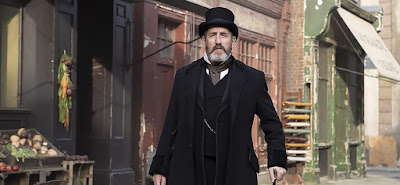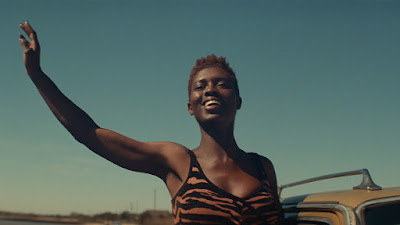Set in 1880s Ireland in the Victorian era heyday of 'postmortem photography' the six-episode period drama follows a renowned memorial photographer who is drawn into a series of apparent murders which appear to be linked to his work.
There is something to be said for short mini-series. It allows more screentime than a film, without being so drawn out to have unnecessary filler in it. Top it all off with not having such a long obligation time-wise to view it, they really are the ideal type of series in this day and age for a healthy binge. Exclusive to the streaming platform Acorn TV, Dead Still is a six-part Irish-Canadian period drama series, written by John Morton and directed by Imogen Murphy and Craig David Wallace.
Dead Still starts off largely as an episodic show, with a strong focus on establishing our main characters in their curious trade of photographing the dead, with only a minor subplot mentioning the larger arc. As the show progresses, the larger arc expands and disrupts the episodic structure forming one large intertwined story. An effective method to build strong character development through an initial "day in the life" phase before introducing them to the main source of conflict.
The series is set in the late 1800s, and as such, the costuming and set designs have a very classic Victorian "Jack The Ripper" vibe to them. What is surprisingly intriguing about the main character is his strong avoidance of the main plot thread. As a member of the audience, you are waiting for that point when enough has happened for Mr Blennerhassett to relent and agree to assist the young detective in solving crimes, but alas it isn't to be. Blennerhasset is happy to not be involved, and his active avoidance is au unexpected source of humour for the series.
One would usually expect everything to be rather prim and proper for a Victorian period piece, but it is the uncouth blue humour that makes this series feel delightfully fresh; whether it be the sweat on one's sack, explicit language, photography of tastefully obstructed sexual intercourse, or other morbid topics. Dead Still gently pushes that boundary of morbid curiosity and perverse macabre to keep the audience intrigued.
While there are certainly a few performances that come across as hammy and over-the-top campy, this crime mystery meets black comedy manages to put on enough of a serious face to make it worthwhile investing in. There is enough liveliness in the show to make you question the boundaries of the reality yourself. Does this universe have the supernatural? Are spirits, ghosts, and souls real? Watching the sombre and composed Blennerhassett tackling these big questions, sometimes feels as goofy as Scooby-Doo, but other times as well-thought-out as Sherlock Holmes.
Blennerhassett is supported by his niece Nancy, and former-grave digger (now assistant) Conall. Nancy somehow simultaneously oozing in positivity and pretentiousness, she learns humility and a greater appreciation for all classes of people. Conall is consistently the voice of reason; despite being far timider, he is more ethically bound than Blennerhassett who is driven by pride and money.
Dead Still is an interesting look into the fascination with death that was prominent in Victorian times, under the guise of a PG murder mystery. Just dark enough and with enough deadpan humour (pun intended) to appeal to a wide audience.
Note: This is series is completely unrelated to the 2014 horror film that it shares its name with.
Dead Still is being released exclusively on Acorn TV across June/July
Originally posted to: https://djin.nz/Kr8649








































